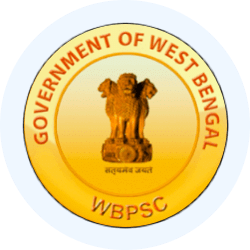Revolts and Rebellions in West Bengal | WBCS Preparation: All Subjects - WBCS (West Bengal) PDF Download
Revolt of 1857
The Revolt of 1857 was a significant yet unsuccessful uprising in India. It originated in Dum Dum, the headquarters of Bengal Artillery, where rumors about the relocation of the headquarters to Meerut and the establishment of the School of Musketry led to discontent. Mangal Pandey initiated the uprising in Barrackpore in 1857 by killing a British official.
Partition of Bengal
In 1905, Lord Curzon's decision to partition Bengal, executed on October 16th, resulted in a controversial division. Lord Hardinge later reversed the partition in 1911 due to widespread protests. The initial partition created Eastern Bengal and Assam, separating largely Hindu West Bengal from predominantly Muslim East Bengal. This divisive policy was perceived as a British strategy of 'divide and rule,' leading to significant unrest. The partition of Bengal occurred again in 1947 during the religiously driven partition of India, dividing Bengal between India and Pakistan. West Bengal became part of India, while East Bengal became part of Pakistan, eventually gaining independence as Bangladesh in 1971.
Chakma Revolt
The Chakma Revolt of 1776 saw the Chakma tribe, the largest ethnic group in Bengal (now in Bangladesh), rebelling against British control. Triggered by increased demands for cash revenue and enhanced rent rates, the Chakmas, led by Ranu Khan, employed guerrilla tactics to resist British rule in the Hill Tracts.
Chuar Rebellion
Chuar Rebellion was occurred in 1798-99. Chuar Rebellion was a massive rebellion that broke out in South-West Bankura district and in North-West Midnapore district. The British East India Company and some Zamindars of Midnapore were engaged in curbing the rebellion ruthlessly.
In the year 1798, nearly 1500 rebels led by Durjan Singh, established their rule in villages of Raipur Pargana. They attacked the headquarters of the British East India Company, after a fierce battle with the armies of British East India Company. But they were defeated. However, in Shalbani, the rebels were victorious and destroyed the army barracks of British East India Company. Finally, by means of bloody repression and the usual policy of divide and rule, British were able to crush the Chuar Rebellion.
Santhal Rebellion
This rebellion was started in 1855. The uprising of the Santhals began as a tribal reaction to and despotic British revenue system. Before the British advent in India, Santhals resided in the hilly districts of Manbhum, Barabhum, Chhotanagpur, Palamau and Birbhum. They lived an agrarian lifestyle. But in British period the landlords and moneylenders allured them by goods and loans and gradually they became bonded labour to them.
The Santhals resented the oppression by revenue officials, police, moneylenders, landlords in general by the outsiders (whom they called Diku). The Santhals under Sidhu and Kanhu rose up against their oppressors, declared the end of the Company’s rule and asserted themselves independent in 1854. This uprising spread in Bengal.
Indigo Revolution
The Indigo Revolution of 1859 was a peasant movement against Indigo planters in regions like Burdwan, Bankura, Birbhum, North 24 Parganas, and Jessore (now in Bangladesh). The farmers, facing exploitation and meager profits, revolted against the Indigo planters. The movement gained momentum with publications like 'Neel Darpan' by Dinabandhu Mitra.
Chittagong Uprising
The Chittagong Uprising involved revolutionary armor raids in Chittagong, Bangladesh, starting on April 18, 1930. Leaders like Surya Sen, Nirmal Sen, Kalpana Dutta, Anant Singh, and Lokenath Bal aimed to destroy British armories and disrupt railway and communication lines.
Nandigram Violence
In 2006, the Nandigram Violence unfolded as over 4000 heavily armed police, following orders from the Left Front Government, clashed with protesters opposing the West Bengal Government's plans for a Special Economic Zone (SEZ). The incident, marked by police shootings and protests, originated from the government's decision to establish a chemical hub under the SEZ policy, leading to widespread discontent and the birth of a new movement.
|
77 videos|109 docs
|
FAQs on Revolts and Rebellions in West Bengal - WBCS Preparation: All Subjects - WBCS (West Bengal)
| 1. What were some major revolts and rebellions that took place in West Bengal during the WBCS period? |  |
| 2. What were the causes behind the Santal Rebellion of 1855-1856 in West Bengal? |  |
| 3. How did the Indigo Revolt of 1859-1862 impact West Bengal's agrarian economy? |  |
| 4. What were the main demands of the Tebhaga Movement in West Bengal? |  |
| 5. How did the Naxalite Movement impact West Bengal in the late 1960s and early 1970s? |  |

|
Explore Courses for WBCS (West Bengal) exam
|

|
















